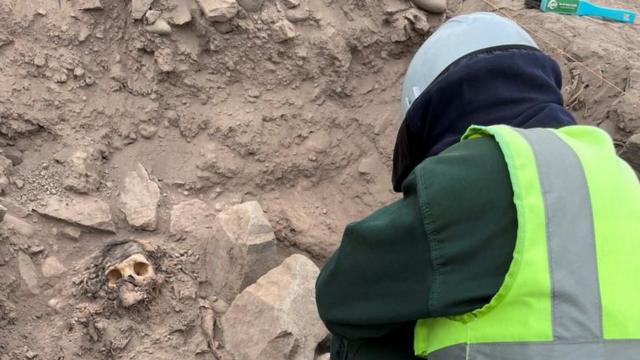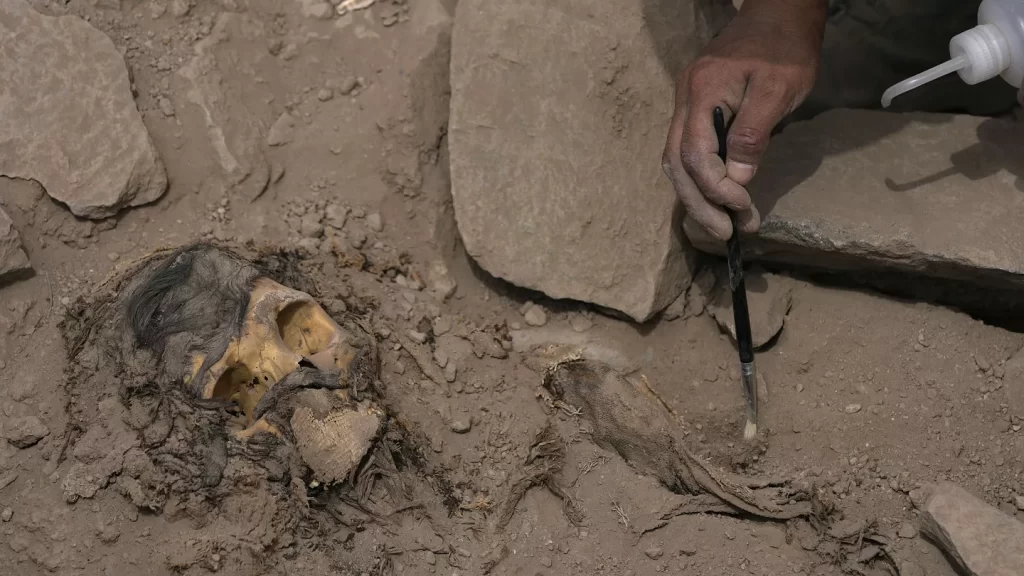Peruvian archaeologists made a significant discovery when they unearthed a pre-Hispanic mummy in a stone tomb atop a hill near Lima, adjacent to a professional football team’s training field. The excavation, led by students from San Marcos University and researchers, initially revealed remnants of hair and a skull enclosed in a cotton bundle.
Archaeologist Miguel Aguilar reported that prior to their meticulous search for historic remains, the team had to clear a staggering eight tonnes of rubbish from the site.

Archaeologist Miguel Aguilar, who also serves as the manager of the historical and cultural center of the Municipality of Rímac, stated that the mummy discovered was estimated to be around 3,000 years old. The tomb was situated atop a demolished U-shaped clay temple, a distinct feature of specific pre-Hispanic structures. Aguilar suggested that the mummy likely pertains to the Manchay culture, which thrived in the valleys of Lima between 1,500 and 1,000 BCE.


The presence of coca leaves and seashells alongside the mummy suggests that it may have been involved in a ritual sacrifice. Aguilar commented, “The person who had been left or offered up (as a sacrifice) in this area happened in the last phase of the construction of this temple.”
